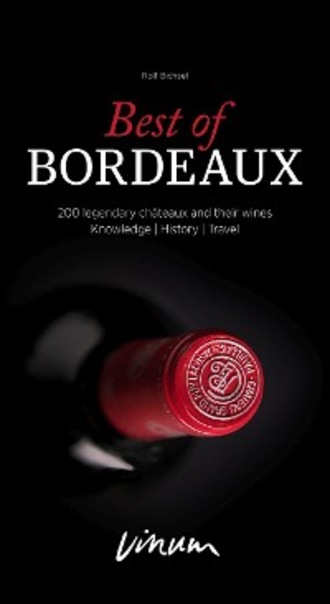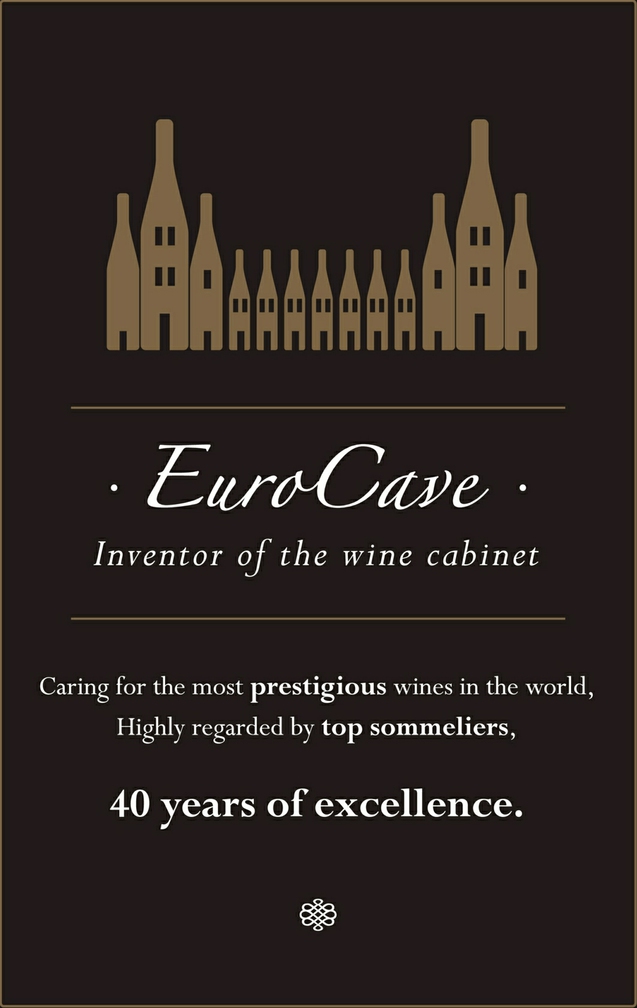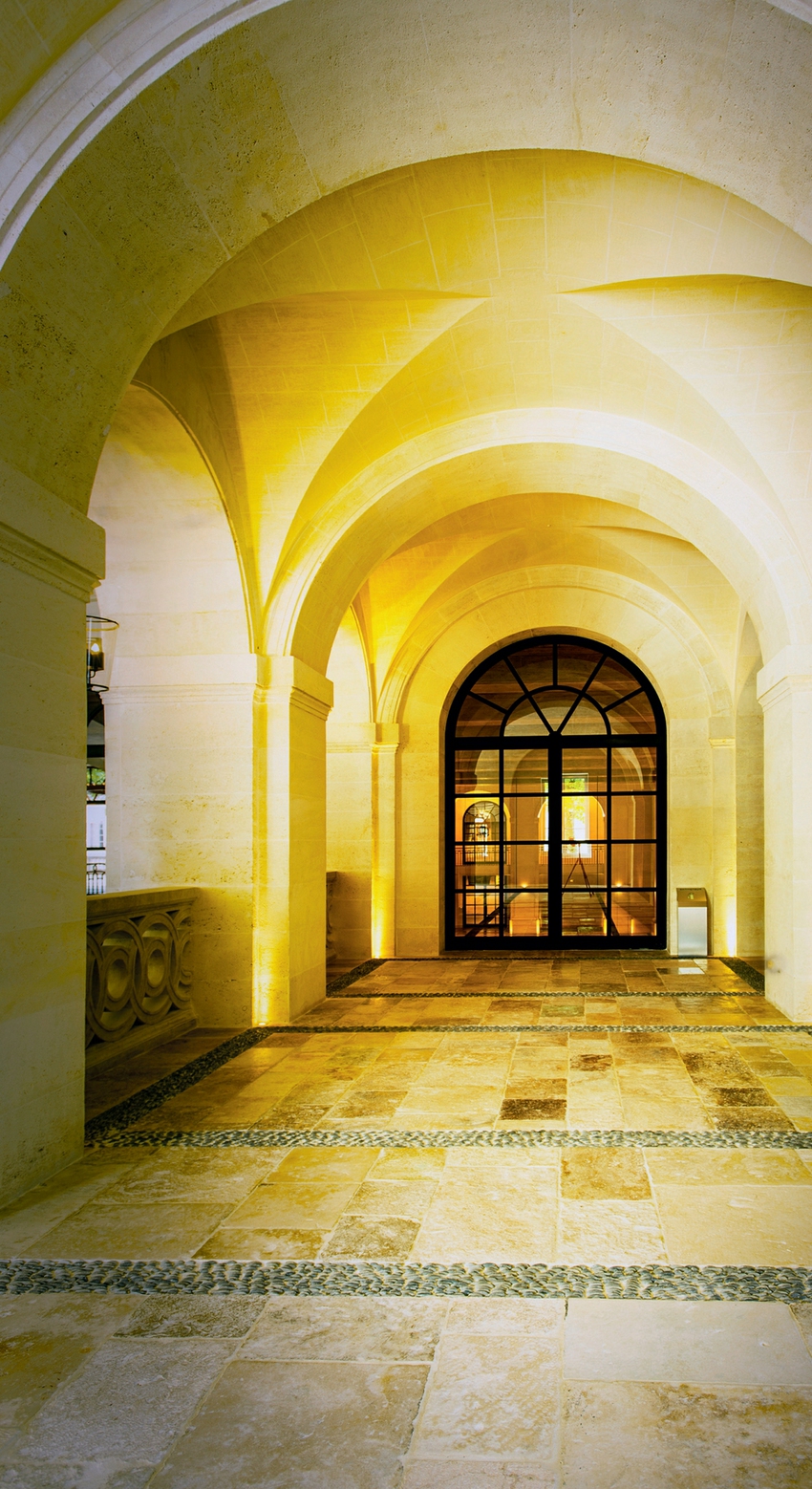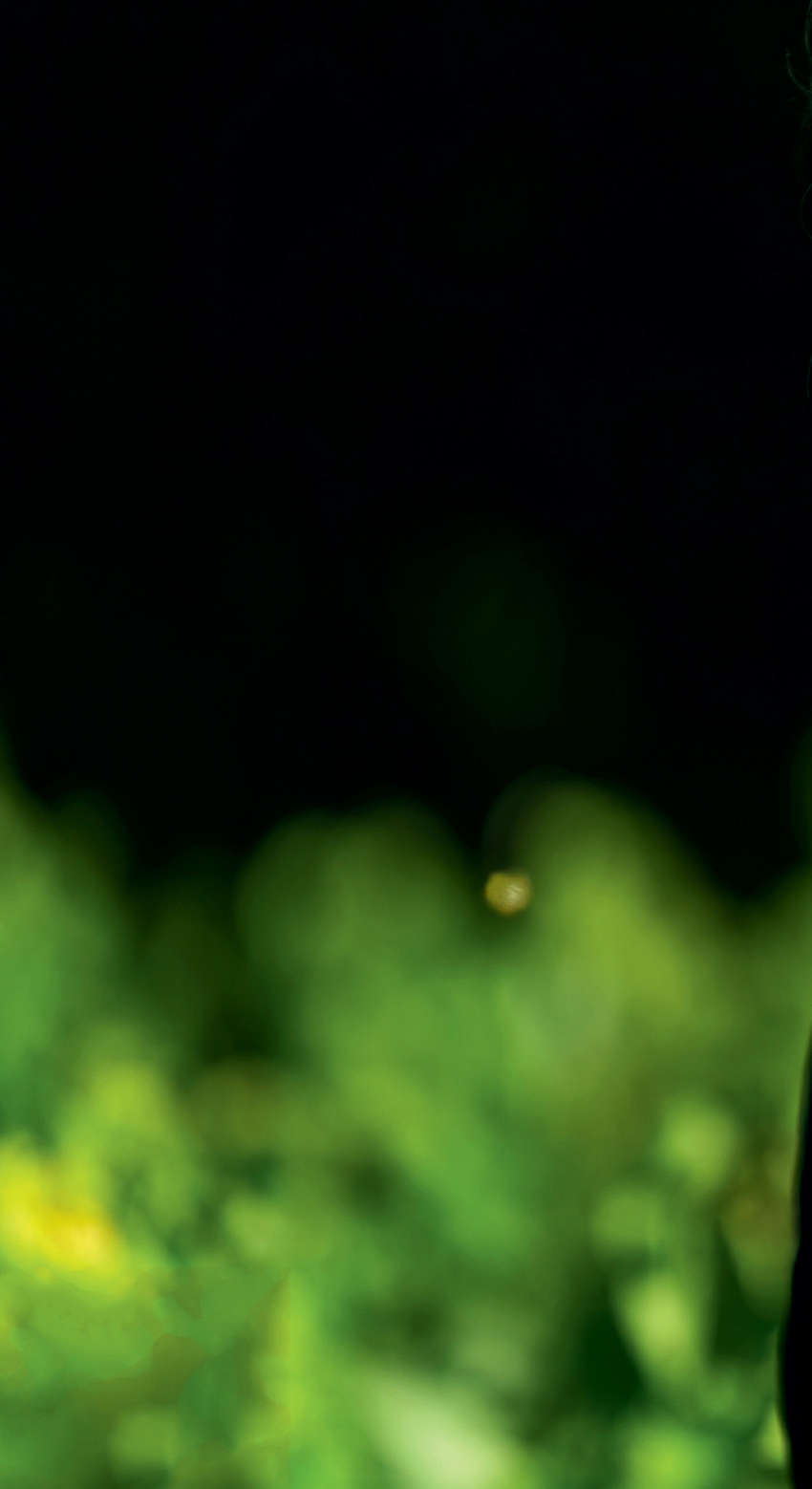
Полная версия
Best of Bordeaux
ff
erentiates between Grand

Cellar of Pichon Baron
37
Crus Classés and Premier Grands Crus Classés A and B, and is updated around
once a decade. Still clear?
The 1855 classification is first and foremost a historical legacy with obliga-
tions: not a single estate under that classification currently fails to produce
at least good and generally excellent wines, with the same also applying to
Saint-Emilion Premiers Crus Classés and Graves Crus Classés at the very least.
Whether or not historical classifications can or should be updated remains open
to question: to me, it is like wanting to banish Picasso or Braque from the pan-
theon of fine art because their works were not painted on an iPad. The fact that
Lafite is still Lafite and Margaux is still Margaux does not prevent any wines with
lower classifications or no classification at all from tasting even better than them
on occasion, but this alters nothing about the historic context and significance
of either. I do not believe in objectivity when it comes to art or top wine – this
drinkable product of agricultural cultivation and handcrafted production that
arouses so much passion. Objectivity is the first step on the road to cultural fas-
cism.

38
History Global trade
The power of the brand
Between 1700 and 1870, Bordeaux was synonymous with great, elegant red
wines and also a new colour (Bordeaux red), all of which quickly conquered the
world. Dry white wine also continued to be produced, but in the 19th century
in particular had to give ground to the production of exclusive sweet wines en-
joyed by more than just female foodies. This utterly blissful period – when the
vineyards of the Gironde were literally bursting at the seams and in addition to
the true top terroirs also occupied soils that would have been better used for
growing corn – was brought to a terrible end by the phylloxera crisis, stock mar-
ket crash and two world wars. This was a long drawn-out tragedy, as the region
constantly fought back but was ultimately forced to surrender. By the late 1940s,
Grand Crus existed only in memory in many areas. The Bordeaux wine as we
know it today is not centuries old, but is in fact now only barely reaching retire-
ment age. Bordeaux's return to its current lofty heights began around the turn of
the millennium, with the enthusiastic adoption of new technology which in the
best cases works hand-in-hand with age-old experience, and observance of the
golden rule that if you want to stay healthy and keep chalking up profits then
you have to master the art of selling your products, which requires international
distribution along a well-oiled, seamless chain stretching from the owner or a
director of an estate, who is responsible for the wine's quality and typicity (i.e. its
recognition factor), via merchants and wholesalers to general agents in distant
lands. This is how it works in Bordeaux: producers make wine from a selected
terroir using specially adapted grape varieties, which when blended ensure a
very particular style whose key characteristics are body, density and tannins
which develop as time passes. This style is elevated to the position of a system
and a brand which insists on its uniqueness. The producers cannot keep all the
profit for themselves, as A) they would be the only people willing and able to
brag about its uniqueness and B) they would be unable to a
ff
ord a global dis-
tribution network which is expensive to maintain, multiplies production costs
and forces the profit curve into a downward trend. So they have twenty, thirty
or fifty merchants on hand who must all sing the same tune for advertising and
distribution purposes. In return, they must be paid, which is no problem at all as
they simply increase the purchase price.
As investment in a brand is only worthwhile if it is spread out consistently
over a long period of time, clever merchants corner the market on certain wines
(those viewed as the most legendary, most expensive or most sought-after) be-
fore harvesting has even finished. This is what is now called ‘vente en primeur',
presented with great fanfare in the spring after the harvest. It involves purchase
via subscription, previously called ‘vente sur souche' or ‘option' and simply
means hogging the wines before they have even been bottled. This brings a
third partner into play, namely the broker or courtier, acting as a link between




Château Montrose

41
Brand and style History
estates and merchants. Why not sell direct? Quite simply because the broker
is a neutral party representing the interests of both partners, who would other-
wise be trying to get the better of one another. Brokers themselves do not sell
wines but simply take a fixed margin of four per cent, so it is in their interest to
regularly procure su
ffi
cient quantities, correctly assess the sales situation, the
demand and also the quality of the wine, and in the best cases justify a high
price (which helps the owner) whilst also ensuring that the wine remains af-
fordable to trade partners, who would otherwise go bankrupt or take their busi-
ness elsewhere. And to prevent brokers from deciding to engage in dumping
and undermine prices rather than following the unwritten rule of adhering to
a price guideline, sly sellers have been known to offer their daughters' hands
in marriage: the world of top Bordeaux is one huge family and solidarity rules
among family members, at least o
ffi
cially. Despite all the gloomy predictions,
this system which is so often written off has never functioned so well as over
the past twenty years, with the piper being paid (whether we like it or not) by
Bordeaux fans like us all over the world.
The theatre of aging
The road to success is a rocky one made of gravel, up to ten metres deep. The
benefits of this soil are that it drains water yet still always remains damp, is a
good heat store on frosty nights, requires the two or three grape varieties which
for centuries have proven their ability to root properly in the capricious climate,
and allows the grapes to ripen at leisure, so slowly that they become crisp and
thick-skinned, assimilate sugar (but not too much) and break down acidity be-
fore over-ripeness and rot set in. Wine pressed from these grapes and drunk
immediately turns out ink black, tart and almost undrinkable, tasting of grape
stems and pomace – ugh – one for the masochists. Instead, you would be better
sticking to fruity Burgundy, meaty Spanish examples or wines from the areas
around Saint-Emilion or Pomerol, which have smoother tannins (other than all
the New World copies which are now thankfully becoming rarer: the fashion
for over-extracted wines which reached its peak between 1995 and 2005 has
faded as quickly as it arrived). However, if you allow great Bordeaux from these
special soils to mature then it becomes unbeatable in terms of balance, airiness,
elegance and finesse, making it ideal for speculation, as great Bordeaux (particu-
larly Cabernet-based wines) goes on and on and keeps as well in a cellar as gold
bars, only tasting much better. And because modern winery technology now
means that the wines taste pleasant earlier but lose none of their aging ability,
great Bordeaux has remained ultra-modern and the whole world cannot get
enough of it. However, not even God knows how many cases are sold and drunk
and how many are stored and hoarded – perhaps because Peter is speculating

42
with Bordeaux on the Lord's behalf. If the flyers advertising special offers and
premium-price cellar clearances which land in our mailboxes at times of crisis
are anything to go by, there is no shortage of great Bordeaux.
Profit calculations
Contrary to popular belief, there is no real correlation between wine quality
and selling price in Bordeaux. ‘Année vert, année cher', the elderly can be heard
to say: the less there is available, the more expensive the wine becomes. Bor-
deaux is a prime example of the law of supply and demand, and thus a strong-
hold of assets. The fact that Engels was a fan of Margaux (as claimed by Karl
Marx's daughter) is a peculiar irony in the history of winemaking, as speculation
with great Bordeaux does pay off: anyone who has gambled with skill over the
past 20 years will have pocketed healthy profits. Running a Grand Cru is there-
fore a rewarding enterprise – to a varying extent. Over the past hundred years,
the average value created by actual winemaking (including on top estates) has
been a meagre five to eight per cent. Grand Crus are monuments of wine his-
tory, so everything looks better if we examine the ‘valeur vénale', or estate value,
which (depending on the time of the purchase) can increase by up to 1,000%
not including investment, sometimes causing inheritance taxes to rocket and
also creating high levels of debt if inheritances are divided up. However, for
those who bought and sold at the wrong time it can also mean a -50% loss.
Nevertheless, if considered over the past twenty years, the top estates are true
treasure troves. Translated into bottle terms, no one in Bordeaux can produce
wines for less than 1.5 euros per bottle, and top quality for less than 5 euros is
an illusion. However, nowhere do production costs rise much above 20 euros,
which allows fortunate producers to gild many taps, employ many gardeners,
dig many pools, sponsor many artists and much more: in terms of the prices cur-
rently being applied (and depending on their level of debt, as mentioned above),
in good years this means profits of 50% or more. But remember, this only ap-
plies to the top 20 or 30 most famous estates – wineries in the 40th to 500th
positions have similarly high production costs but invest considerably more in
marketing and sales whilst having to sell their wines at significantly reduced
margins. As in most other high-quality wine regions, the widest range of per-
fectly respectable wines in Bordeaux from a quality perspective can be found at
between 20 and 40 euros. Depending on the expenditure incurred, profits in the
red wine sector range from moderate to good, but can start plummet in a flash
when loans take their toll, crisis looms on the global market and the tax authori-
ties are at the door. The situation is equally fraught at the other end of the scale:
the 500th to 1,000th positions are occupied by wines whose style has nothing
in common with the Grand Crus but which are still called Bordeaux, and whose
History The theatre of aging

Barrels at Pédesclaux
44
History Profit calculations
existence is therefore based on maintaining the pretence that they are similar to
a Grand Cru but available for much less money.
For Bordeaux simply suggests Grand Cru and implies a complicated, exces-
sive, high-quality wine. Instead of unsuccessfully tagging along behind this idi-
otic ideal, winemakers either side of the Grand Cru line (which is a world of its
own) would be better off setting their minds to producing good, fresh, fun wines
for cheerful consumption as an increasing number of winemakers are now do-
ing – modern wines for everyone, rather than being forced to struggle between
heaven and hell at the limit of profitability. If Tuscany can do it, then why can't
Bordeaux – in the Côtes or Entre-Deux-Mers – do the same? Every month Gi-
ronde winemakers throw in the towel, countless producers are surviving by
the skin of their teeth, and average prices in Bordeaux are still no better than
in Beaujolais or Côtes du Rhône. Don't forget that Bordeaux floods the global
market with around a billion (1,000,000,000) bottles of wine every year, more
than 90% of which have nothing in common with Grand Crus, and the mere fact
that some of this is described as Bordeaux Supérieur implies that there must be
plenty of ‘Bordeaux Inférieur'!
Thanks to the Internet, we now have the ability to compare the prices of
world-famous brands in an instant. Online trade in Bordeaux is flourishing (and
for the time being is not upsetting the traditional system, just traditional Bor-
deaux merchants). Grands Crus are available via numerous channels, and the
margins that an intermediary can make are on average relatively modest (un-
less they go into cellaring and create added value from long aging). To this can
be added competition from major (French) distributors who are increasingly
seeking to circumvent the primeur-courtier-merchant system and use Grands
Crus as lures. Special offers arrive in our mailboxes and the (executive) staff
of Bordeaux Grands Crus are the first to run to the supermarket. Things look
rather different at the other end of the scale, with rules that bring to mind the
ills of the agricultural economy. Producers are receiving barely enough money
to survive, sellers are trusting in the power of a recognisable name and fanning
the flames of misunderstanding until they are blazing, slashing the margins of
wines bought cheap which have to compete with Grands Crus, and once again
wine enthusiasts are pulling chestnuts out of the fire and getting their fingers
burnt on illusory bargains. And because the rest of the wine world grumbles
about Bordeaux in public but emulates it in private, there are very few real al-
ternatives.
45
The Bordeaux-makers History
The Bordeaux makers
Well, first there are the North Africans. Although they do not drink great Bor-
deaux, they play a major role in producing it, for which they are paid a pittance.
They are also Muslims, which poses no problems, as the Bordelais have always
shared Old Fritz's view that everyone should be holy in their own way. Although
Bordeaux has always been Catholic, it has successfully traded with Israelites,
Protestants and Anglicans who had become the ultimate controllers of global
trade, and its vines are now cultivated by Muslims, particularly in the historic
left bank regions of Bordeaux, largely by (local) women. Despite the high unem-
ployment rate, your average Frenchman does not want to get his hands dirty
with hard vineyard labour. Men sit on tractors and drive full barrels through the
winery. Manual work such as foliage treatment, vine pruning, hoeing between
the canes where the machines cannot reach, and sorting has always been per-
formed by the wives, and the men are happy that way. ‘Petites façons' (‘small
work'), was what they called the work of female hands, namely breaking up the
soils between the vines with a pickaxe, whilst the men performed the ‘big work'
consisting of clattering proudly through the vines with a team of oxen and whis-
tling to the girls slaving away in the dirt below. Tribute should also be paid to all
of the female figures past and present who have accompanied their husbands
in the vineyard. They also play a leading role during the harvest, at the sorting
table, in the o
ffi
ce (who else ensures that orders are ful
fi
lled, samples are sent,
visitors are welcomed, coffee is brewed and thousands of other ‘minor details'
are taken care of?) and even at the head of the company or in the cellar: the Fac-
ulty of Oenology in Bordeaux now has more female students than male, which
is as it should be.
What makes Bordeaux so unique is the fact that production on an almost in-
dustrial scale began here in very early times. This made the division of labour
and specialisation essential, demanded a large amount of technical know-how,
and soon required its own oenological faculty: techniques such as sulphuring
barrels, injecting copper sulphate, modern pruning and organic lactic acid deg-
radation were discovered, studied or further developed in Bordeaux, in recent
years by researchers and in earlier eras by experienced directors of well-known
estates and a host of nameless vineyard workers and cellar masters – the collec-
tive memory of Bordeaux winemaking covers centuries. Estates are and were
expansive – by the 18th century Léoville already had 200 hectares of vines, and
the six Premiers Crus on the left bank together produce a million bottles a year.
If an estate owner proudly explains to an awed visitor the tricks he has used
to get the latest vintage to the wine press but then cannot find the light switch
on the tour, and praises the beauty of his neighbour's vineyards whilst visiting
the terraces, there is no need for concern, as he is being watched at a distance
by the backstage crew, all competent, knowledgeable and just happy that the

Star oenologist Michel Rolland


48
History Division of labour
owner lets them follow their instincts. What would Lafite be without its director
Charles Chevallier, Yquem without Pierre Lurton or winemaker Sandrine Gar-
baye, Pichon Baron without Jean-René Matignon, Cantenac Brown without José
Sansfin to name but a few, and what would all of these figures be without the
hardworking bees and drones buzzing away behind them? The owners who can
be found in the cellar of their Grand Cru even when the press is no longer there
(I am thinking in particular of Lucien Guillemet at Boyd Cantenac) are excep-
tions to the rule and of no detriment to quality – in fact, quite the opposite. In
the best cases, the owner and director develop a form of symbiosis as at Pontet
Canet for example, where the dynamic and enterprising Alfred Tesseron and
the dour tinkerer Jean Michel Comme have formed an almost ideal business
marriage which has now inspired a wine whose like the estate (and the world)
has never before seen.
And consultant oenologists? Without them nothing would happen, and the
most important are not always the most famous. It is impossible to avoid the Pe-
ynaud legend, not so much because of his research work as because of his ability
to describe wine in words used by no one before him. The greatest, most price-
less merit of a Michel Rolland is the fact that he has enticed and encouraged
winemakers to head into their vineyards and really taste their grapes in order
to better understand their substance and potential. Although tales of Stéphane
Derenoncourt may have been exaggerated and occasionally become the stuff
of legends, it is thanks to him (among others) that Saint-Emilion now has 200
good wines rather than just 20. However, the nuts and bolts of winemaking is
also carried out by many others, the Dubourdieus, Boissenots, Pasquets, Nav-
arres, Olliviers and the rest, men and women who want nothing more than to
do good work in the background, whether as researchers, analysts, laboratory
technicians or consultants striving to create the perfect blend.
There can be no theatrical success without critics or an audience. What is
the value of critics? Without them there would be absolutely no activity in the
English-speaking world. Parker and co. remain the weather gods of Bordeaux. In
Europe their importance and in
fl
uence (positive and negative!) is rather mod-
est, although some dream of following in Parker's footsteps. This is as it should
be – good critics should have an opinion, which you may or may not share. The
important members of a theatre-going audience are not those who go to a per-
formance because they want to be seen, but rather those who go because they
are interested in the play and form an opinion with the help of critics (rather
than one single critic). Anyone who reads between the lines and deduces that
you can only be a Bordeaux connoisseur by being whizzed seven times around
oenological university in a chauffeur-driven limousine with a minibar has to-
tally missed the point. Let's not leave Bordeaux to the speculators and captains



